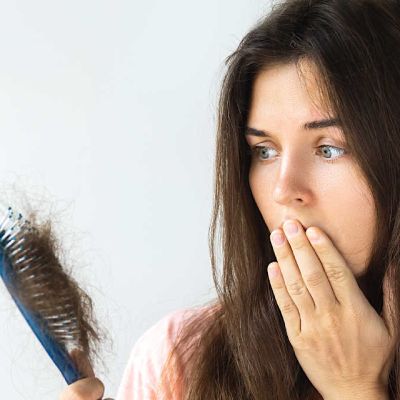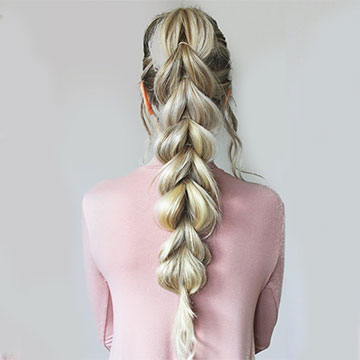Top 10 Best ways to Reduce Hair Carbon

02 June 2020

Hair Experts @ AHS

Having a healthy hair care routine is important for having beautiful hair However it is equally important...
Having a healthy hair care routine is important for having beautiful hair. However, it is equally important that we think about the environment and about ways to reduce our carbon footprint in the journey of attaining the right hair care or hair regrowth or hair styling.
But, is it possible to reduce your carbon footprint through your beauty and hair routine? Sure you can. All you need is a bit of understanding to make certain changes to your lifestyle and your beauty regimen.
This article takes a look at the importance of controlling your carbon footprint in the world by making certain healthy choices. We will suggest the top 10 ways of controlling and hence reducing your carbon footprint by making simple adjustments to your daily routine. Adapting to these changes will not only make your hair more beautiful, it will also make the world more livable. A legacy that you can be proud of!
But first, let us take a look at the concept of carbon footprint and the importance of maintaining a low carbon footprint in order to preserve the environment.
What Is The Carbon Footprint?
Carbon footprint is mainly understood as the total amount of greenhouse gases emitted due to the activities undertaken by an organization, an individual or an event. In short, it refers to the cumulative amount of greenhouse gases that human activities produce every year.
Reducing carbon footprint is the key to preserving the environment, say experts. Reducing carbon footprint can:
- Help save the planet
- Help reduce the side effects of climate change
- Help in restoring the fast-depleting ozone layer
- Lead to greater productivity in farming and agricultural activities
- Help in reducing pollution levels in the world
History of The Concept of Carbon Footprint
The term was promoted by British Petroleum in 2005. In part, it is derived from the concept of ecological footprint popularized in the 1900s. However, unlike ecological footprint, which is a broader concept, carbon footprint is mainly focused on the amount of greenhouse gases that would be required to induce climate change. It is calculated in terms of the amount of CO2 emissions produced by human activities.
Direct and Indirect Carbon Emissions

There are two types of carbon emissions calculated by carbon footprint: direct emissions and indirect emissions. Direct emissions are the emissions that are produced by a manufacturing site making a product.
For instance, the gases produced by an iron and steel manufacturing factory from the burning of fossil fuels at the site is the most common example of direct emissions. Direct emissions are also called Scope 1 emissions.
There is another type of emission closely associated with Scope 1 emission. This is called Scope 2 emissions. Scope 2 emissions consist of the emissions of the materials used at the site to manufacture a particular product. For instance, the emissions involved in manufacturing of electricity and water used at the factory site is called Scope 2 emissions.
Apart from these, there are indirect emissions or Scope 3 emissions. These emissions include those emissions that are indirectly related to the product cycle of a particular manufactured item. These emissions are usually related to the following aspects:
- Purchased goods and services
- Business travel
- Commuting of employees
- Transportation and distribution of a product
- Emissions associated with the sale of a product
- Emissions associated with waste generated from a product
What is The Carbon Footprint of Your Hair Care Routine?
One must be wondering as to how carbon emissions are related to hair care routine? Our beauty routine or hair care routine includes everything from washing out hair with shampoo to using products to style our hair.
All these products that directly contribute to carbon emissions lead to indirect carbon emissions on your part. Therefore, as a conscious and responsible individual of this world it is imperative that we reduce and curb our carbon footprint as far as possible.
What are The 10 Ways to Reduce Your Hair Routine’s Carbon Footprint?
Reducing carbon footprint does not mean compromising on your hair care or beauty regimens. You can go green without skimping on your regular beauty and hair care regimen. All you need to do is to tweak some of your practices that will help you reduce your carbon footprint.
Reduce the usage of Water
Perhaps one of the easiest ways of reducing carbon footprint is to reduce the usage of water required for your daily beauty and hair care routines. The water that you use has to be filtered and purged out of the dissolved impurities.
Cities across the world fetch their water from the nearest water source via pipelines or aqueducts. This water then needs to be filtered to get rid of all the impurities present in the water. Many households now have RO purifiers and other kinds of filters that further purify the water.
The very act of transporting water and then filtering it requires spending of energy and fossil fuels. This leads to a significant amount of carbon emissions. If we all reduce and restrict our water usage, then we will significantly reduce our carbon footprint. Here are a few ways to reduce the use of water:
- Turn off your tap while shampooing your hair or conditioning it. This has shown to significantly reduce water consumption. If we all do reduce our per capita use of water, then we will be able to reduce our carbon emissions and our energy consumption to a great extent.
- Further, try to restrict hair washing to a couple of times a week. This will further lessen your quota of water use and preserve groundwater level of your locality. This will further reduce the total amount of carbon footprint that is expended to make the water fit for use.
Skip the Shampoo
Shampooing your hair is an elaborate procedure that involves a number of steps and use of products. All of these lead to carbon emissions. Starting from the water you use, to the shampoo you apply to the electricity you consume to blow dry your hair - all consume a lot of energy and lead to carbon emissions. Here’s what you can do instead of using shampoo daily:
- Restrict your use of shampoo to a couple of days a week. This will also be good for your hair as it will give your hair a break from harmful chemicals of the shampoo.
- Also, when you are using shampoo, go for organic varieties that are not mass produced and therefore use a lot less energy. You can also make a shampoo at home by mixing essential natural oils, aloe vera gel, coconut oil and any kind of organic soap base. Mix it up with distilled water and you will have a shampoo ready in no time. Not only are you saving energy by not buying a mass produced shampoo, you are also saving a ton of money for yourself.
Skip use of plastic bottles, containers or Reuse them where possible
Our love for single-use plastic is harmful for the environment. The world produces 300 million tons of plastic every year and almost half of such plastic products are disposed of in the environment.
This type of plastic is not biodegradable. They are made out of harmful materials and guzzle a lot of fossil fuel to be manufactured in factories. These single-use plastic items are used in beauty products a lot.
Shampoos, liquid soaps, styling gels, hair dye containers - all use plastic, thereby significantly contributing to greenhouse gases emissions. So, here are a couple of things you can do stop using plastic bottles:
- Firstly, try and shift to glass bottles and containers. Several companies now sell their products in glass containers and bottles. Although they are more expensive, spending a few more bucks on saving the environment is totally worth it.
- Secondly, you can buy in bulk and then keep your beauty and hair care products in small glass containers and use them whenever you want them. In this way, you will be able to skip the use of plastic containers and significantly save up on carbon footprints.
Go for natural vegan products
Animal cruelty-free, organic and vegan should be your mantra for both hair care and your beauty routine. Chemical-based products, such as shampoos, ammonia-filled hair dyes and styling gels use artificial ingredients, which are all produced in factories that consume energy.
On the other hand, hair care products, which are made from natural ingredients, use materials that are abundantly present in the environment. From aloe vera to honey, from yogurt to essential oils, the choice of naturally occurring ingredients is endless.
Several companies are therefore turning to these low energy-consuming ingredients to make their beauty and hair care products. Opting for such natural products is not only good for your health but also for the environment.
Reduce, reuse and recycle
These three words have become the new-age slogan for the conservationist. Reducing harmful chemical-based products, reusing packages and containers of products to store other items and buying products that are made from 100% recyclable packaging can contribute to lesser emissions. Apart from the fact that such products are good for your hair, they are also great for the environment as well.
Be brand conscious
It is just not enough to study the beauty reviews of the cosmetics that you use. It is equally important that you know well about how environmentally conscious your favorite brand of hair product is. Several brands across the world are actively reducing their carbon footprint.
Some brands give themselves percentage points in relation to the amount of carbon footprint they reduce. Many others only use natural, organic ingredients that use a much lesser carbon footprint. Some also engage in community trading and fair-pricing practices, thereby contributing significantly to sustainable business practices. Using their products would automatically lead to reduction in greenhouse gases emissions.
Zero wastage
We often waste our beauty products and end up buying more than what we need. Conspicuous consumption is not only harmful for your pocket, but also for the environment.
Using the whole of what you have bought will lead to zero wastage and reduce carbon footprint. So don’t toss the hair oil or the shampoo bottle when it is half full.
Instead, put the empty bottle in a recycling bin, or even better, give it back to the company so that it can recycle the bottle. Several companies offer their customers discounts if they bring empty containers and bottles for recycling.
Stop using complex electrical gadgets
Gadgets are the ‘numero uno’ or number one enemy of the environment. Iron curlers, blow dryers and flat irons consume a lot of energy. Not just that, each of these gadgets is individually polluting and consumes a lot of energy. Switching to old-age methods of hair care not only promotes hair health but also consume a lot less energy than the fancy gadgets that are used by professionals
Buy in bulk
Buying in bulk has a lot of benefits, including lower carbon emissions. Instead of buying a ton of individual products, many of which may remain unused, you may buy a few items in bulk and keep on using them regularly throughout the year. This can also save you from contributing to greenhouse gases.
Use products that do double duty
Products that double up on their functions are better if you are checking your carbon footprint. Hair serum-cum-conditioner, shampoo-cum-body wash are products that offer a number of benefits together. Buying such products can help you save time, energy and money. Also it lessens the amount of footprint you generate because you are using fewer numbers of products in total.
Conclusion
Hair care and hair regrowth is not rocket science if understood right. If you follow the above-mentioned tips, you will certainly be able to reduce the carbon footprint of your hair routine and at the same time, promote hair regrowth and prevent hair loss.
For professional hair care products specially created for people with hair issues you can learn more about them through our hair experts and plan to switch to our Carl Howell hair care products. The collection boasts of a number of innovative hair care and solutions, starting from shampoo to conditioners specially designed for concerns of hair.
At Advanced Hair Studio, hair care is not complicated. We care for your hair, ‘Strand by Strand’. Discover our entire range of Carl Howell hair care products and give the desired look to your hair without adding to your carbon footprint.
Stay Updated
Subscribe to our email newsletter for helpful tips and valuable resourses
Be an influencer
Join forces with Advanced Hair Studio! Explore exciting collaboration opportunities tailored for influencers. Let's redefine haircare together.
Connect now












